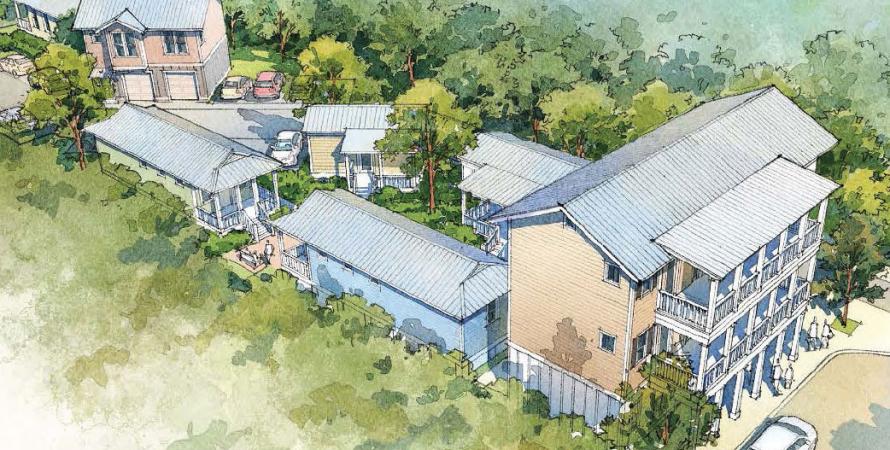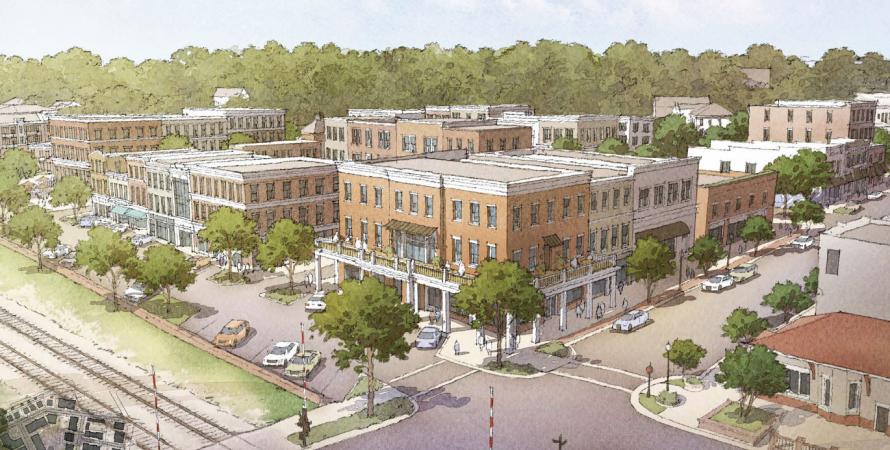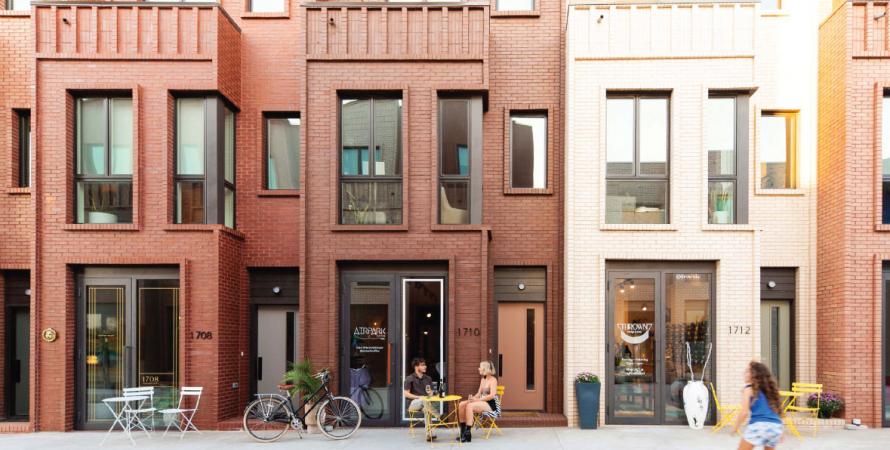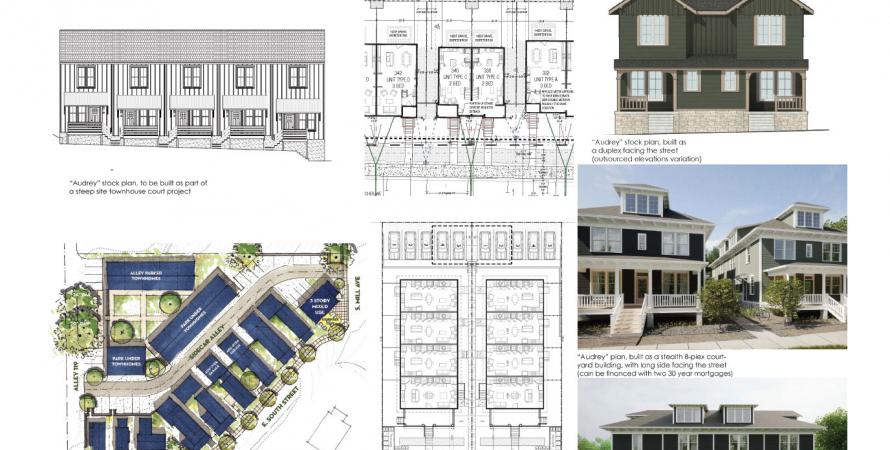-

Missing middle combines cottages, mixed-use
A missing middle development includes a cottage court, mixed-use building, street-fronting cottages, and an accessory dwelling on a narrow parcel near downtown Thunderbolt, Georgia.Village on the Bluff is located along the western shore of the Wilmington River 5 miles Southeast of Downtown Savannah, Georgia. The site is a narrow infill parcel running between two streets with split zoning—single-family residential on one and commercial on the other, in the small waterfront...Read more -

New urban fabric planned for old textile town
A plan is moving forward in Belmont, North Carolina—one of the first communities to adopt a form-based code—that would double the size of the downtown and extend the street grid.A 15-acre planned main street expansion would double the downtown of a 150-year-old former textile town near Charlotte, North Carolina. In the 1990s, Belmont was one of the first municipalities in the US to adopt traditional neighborhood development coding, later called form-based coding—designed...Read more -

Shophomes offer living above micro-retail
The Wheeler District, an airport redevelopment in Oklahoma City, offers many urban housing types including “shophomes”—mixed-use townhouses like traditional main street dwellings.Bringing a product type unique to the Oklahoma City market in newly built housing, the Spoke Street Shophomes provide an opportunity to live, work, and play all in one place. These 10 live-work townhomes deliver micro-retail and attainable housing for an entrepreneurial subset of buyers in the new...Read more -

Adaptable stock plans for missing middle housing
A Fayetteville, Arkansas, designer has created a stock plan that works for a wide range of missing middle types, including townhouses, duplexes, cottages, ADUs, and even a pair of fourplexes.The Audrey is a stock plan for an 18-foot by 32-foot two-bedroom, one-and-a-half bath, 1,200-square-foot townhouse unit that Flintlock LAB has designed and implemented in Fayetteville, Arkansas. Described as a “super adaptable workhorse of missing middle infill housing,” The Audrey has been built...Read more